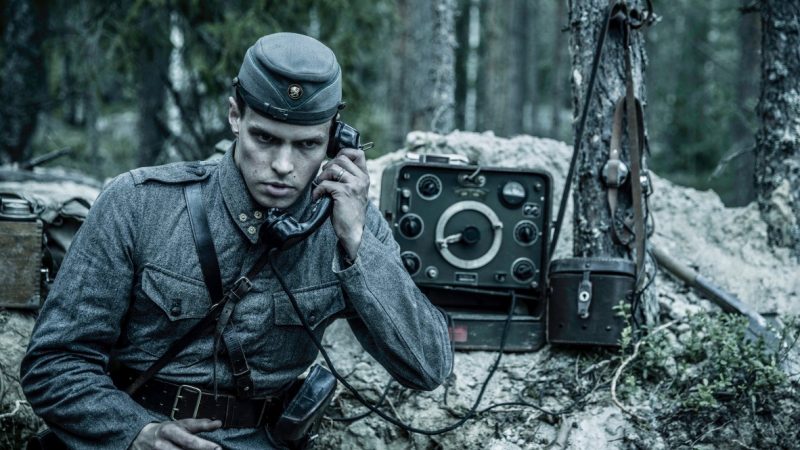The movie UNKNOWN SOLDIER is by the award-winning director AKU LOUHIMIES.
The story follows a platoon of ordinary Finnish soldiers on the battlefields of Finland and the Soviet Union during the final stages of WWII and is based on the classic Finnish novel by VÄINÖ LINNA.
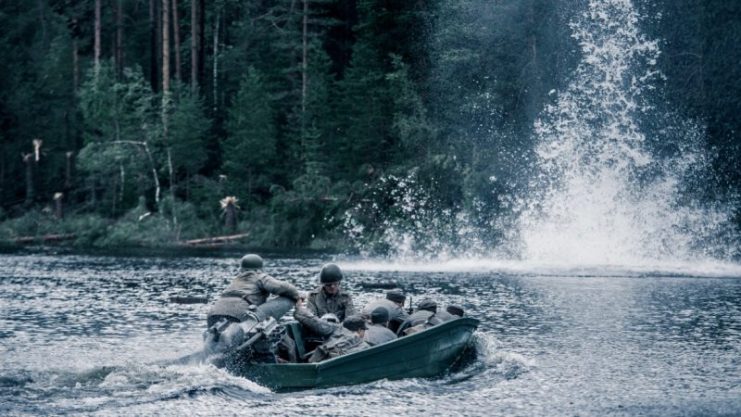
Scenes like this were a common sight during World War II, as Finland and Karelia are peppered with rivers and lakes. Shallow-keeled assault boats with Kovacs m/34 motors were often used for this purpose. While the passengers were able to lay down low, the motor operator had to stand up while trying to maneuver the boat.
The assault boats in the film were faithful replicas of the original assault boats, and used original Hungarian motors. They were made just for the film.
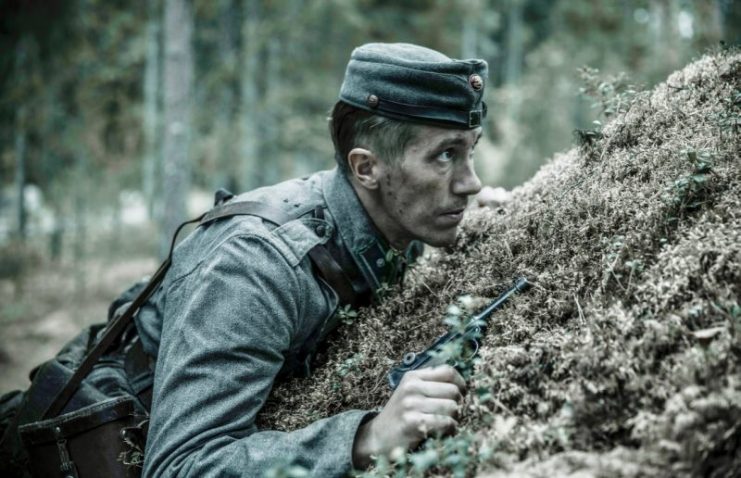
Many of the Finnish officers started the war armed only with pistols. This was true even in most of the conscript infantry companies, such as the ones in the film. Soon frontline officers began using other weapons, such as SMG’s, as they turned out to be much more convenient in combat.
2nd Lieutenant Koskela is using a 1923 export series P08 Parabellum issued to him by the army.
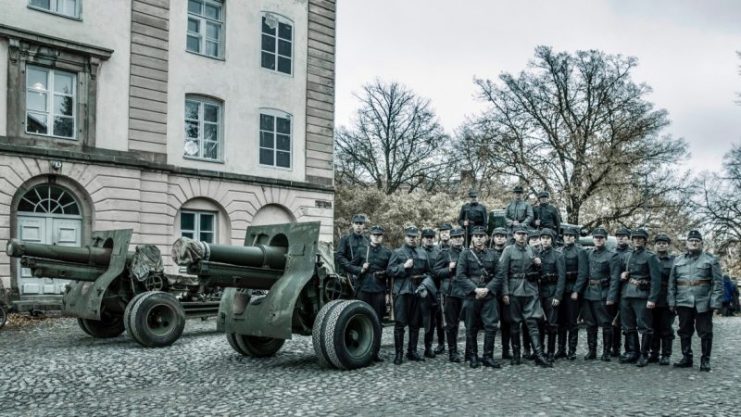
The Finns had to deal with a chronic lack of modern armament and often worked with aging equipment. The artillery pieces in the photo are French Canon de 155 C Mle 1917 Schneiders. Around 150 of these howitzers were bought from the Germans, who in turn had taken them from the French army after the occupation of France.
The two cannons in the above photo have had their wooden wheels replaced post war with rubber tires and are crewed by members of the Traditions Committee of the 1st Heavy Artillery Battery.
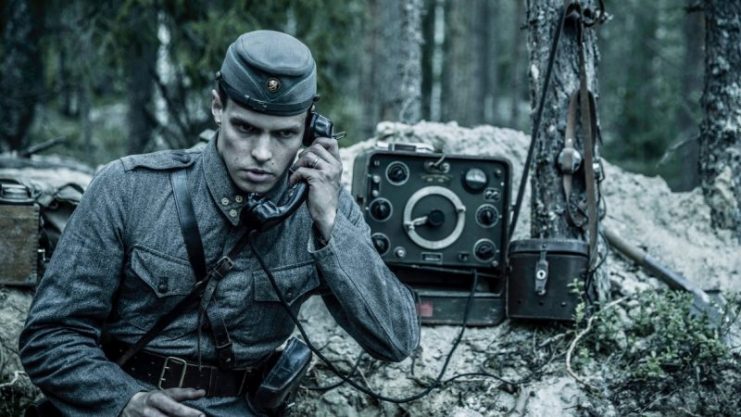
Radios, being modern expensive equipment, were scarce in the Finnish military. They were mostly assigned to company level and above. All communications below that were handled with field phones and/or runners. Being somewhat unreliable, radios were usually only a temporary method of communications until phone lines could be established.
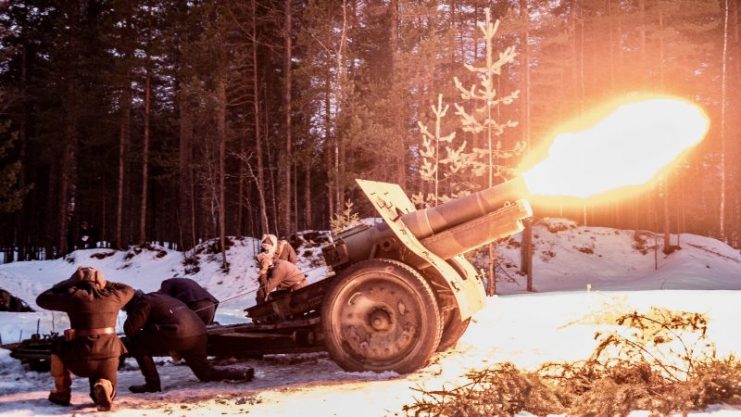
This crew from the Traditions Committee of the 1st Heavy Artillery Battery is firing a pyrotechnic charge from the barrel of a captured Soviet 152 mm Gaubitsa obr. 1909/30. By the end of the war Finnish forces had captured 97 of these howitzers, and most of them were pressed into service almost immediately after capture.
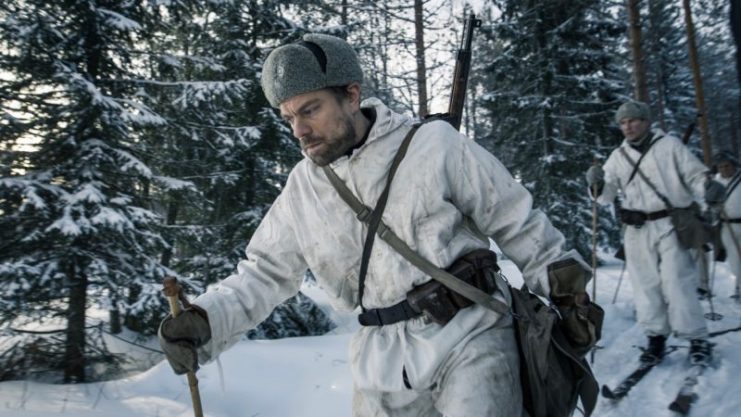
Even though it is often said that the Finns had special ski troops, the reality was that every single Finnish soldier was expected to be able to ski. They were the main mode of transportation during the winter time for much of the military. Ski training courses were organized for men who lacked this skill.
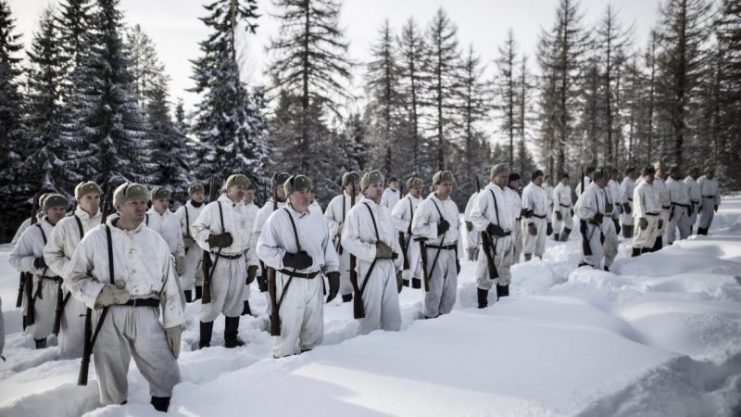
An integral part of a Finnish soldier’s uniform during the Second World War was the snow camouflage suit. They sparked many legends of white ghosts–and probably saved quite a few lives. The suits were inexpensive to manufacture and came in a large variety of shapes and sizes.
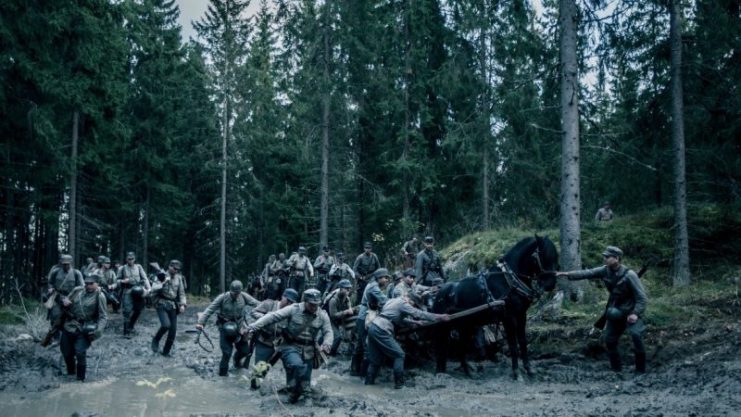
“General Mud,” or the poor condition of the roads in the war zone, was not as big of a surprise to the Finnish Army as it was to the Germans. It was well known within Finland itself. Mud played its part in straining supply lines and slowing down the movement of troops. Dedicated road maintenance units fought their own battles against this enemy throughout the war.
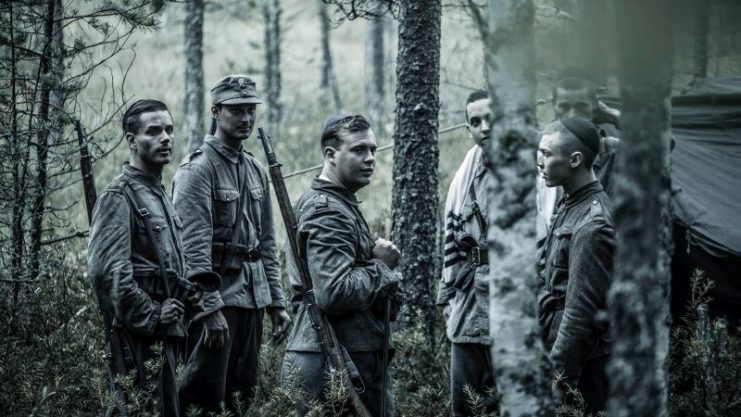
The Finnish Armed Forces, despite fighting alongside the Germans, was not interested in racial or religious issues. Many minorities served side-by-side with their fellow countrymen during the war.
https://youtu.be/rQTs1_JevMo
These minorities included Muslim Tatars, Finnish Jews, and Romani. The common ground was that they were all Finnish and were ready to defend their home country.
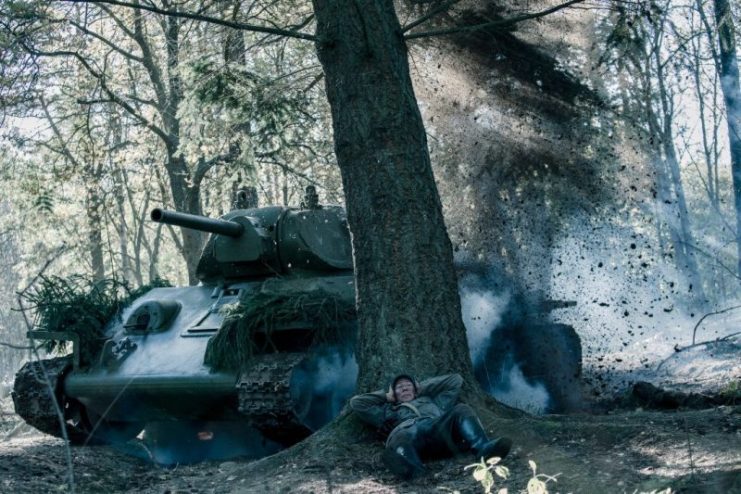
When Finns first encountered T-34-76 tanks during the assault phase of 1941, the tanks were deemed almost invulnerable to Finnish anti-tank rifles and guns. The most reliable way of dealing with these tanks were land mines and satchel charges.
The T-34-76 used in the movie is part of the Parola Armour Museum collection and has some Finnish modifications that a keen tank enthusiast might notice.
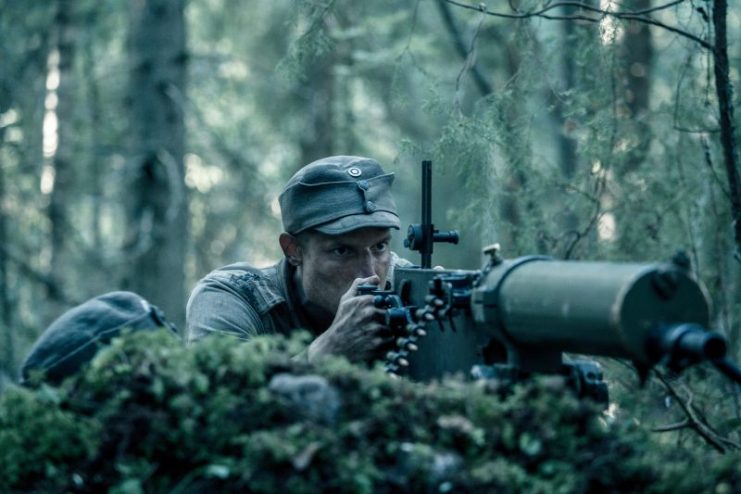
In 1941 each Finnish infantry battalion consisted of company staff, 3 infantry companies, 1 machine gun company, and a light mortar platoon.
The 12 heavy machine guns of the machine gun company were attached to the infantry companies to provide fire support for both attack and defense. Koskela’s Platoon spends most of the war attached to the same infantry company.
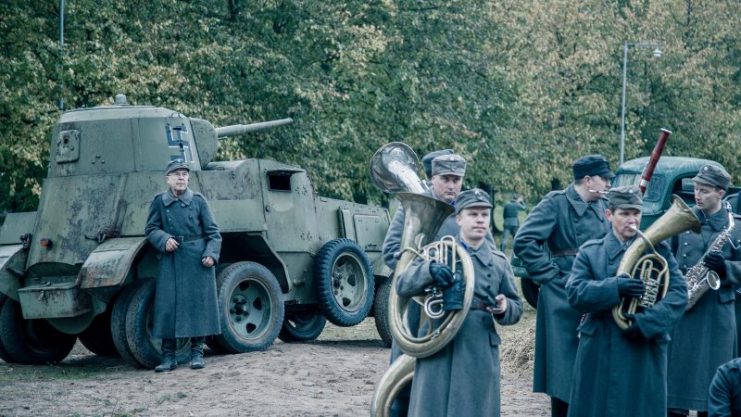
In this quiet scene the band is preparing for the parade in celebration of the conquest of Petrozavodsk, quickly renamed Äänislinna by the Finns. A captured Soviet BA-10 armored car, now in service for Lagus Detachment, is waiting in the background. This vehicle is from the Parola Armor Museum collection.
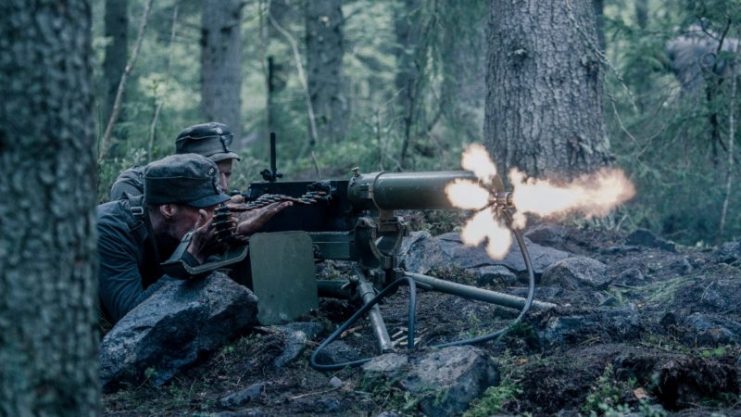
Finland modified most its Russian Maxim heavy machine guns before the war with varying upgrades including a new tripod based on a German export model, a new steel belt design to replace the unreliable Russian canvas belts, and an accelerator mechanism inside the receiver with a muzzle booster to bring the fire rate from 600 rpm up to as high as 850 rpm.
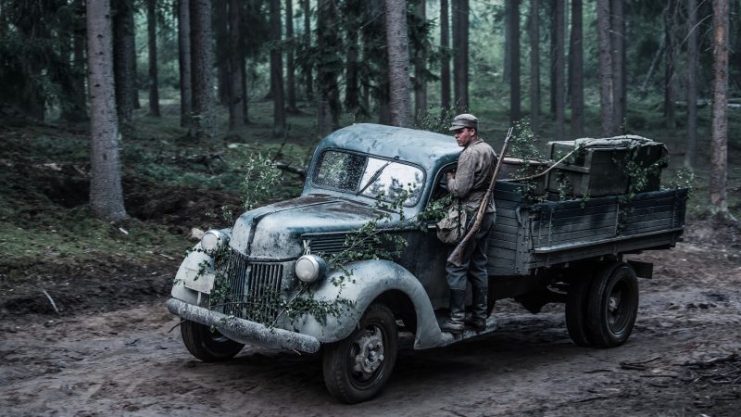
While most of the Finnish Army moved on foot or was horse-drawn, trucks were used as much and as often as possible. Here we can see an example of the most numerous and most famous truck in service: a Ford V8 truck from 1940.
It was affectionately known as “Fighter Ford” by the troops, perhaps for its speed or the sound of the engine. Whatever the source of the name, the trucks were much loved whenever a tired infantryman could ride them.
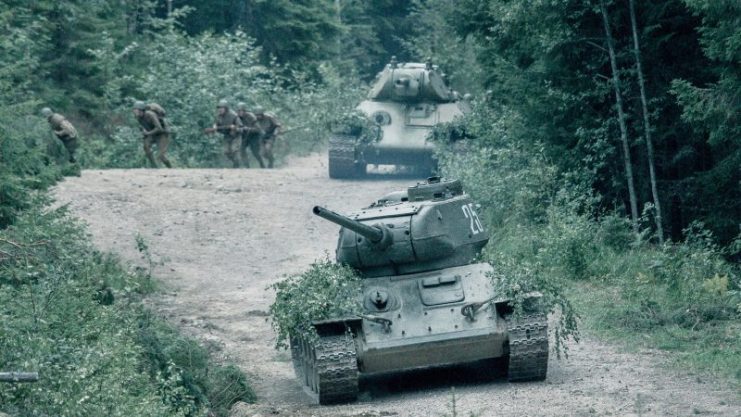
Finland started replacing its anti-tank guns with more powerful German Pak 40 guns in 1943, but many Finnish units still had older 37 and 45 mm guns. The Soviet breakthrough assaults in the summer of 1944 threw massive amounts of men, artillery, air power and tanks against the Finns.
https://youtu.be/rPOi0bQ4Fxk
Among these were the new T-34-85 and IS based models. With their thick armor these tanks proved to be a real challenge for outdated Finnish anti-tank weapons.
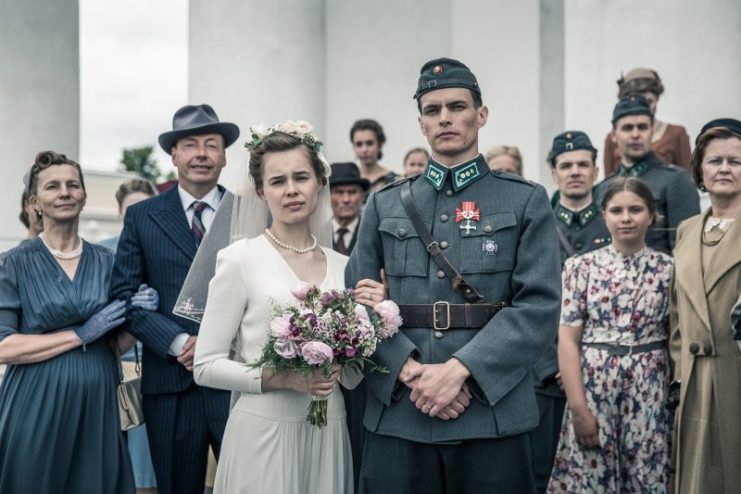
Like in every warring nation of the time, marriages among young people soared during the war. The weddings were often organized in groups as was the case in Lieutanent (later Captain) Kariluoto’s wedding.
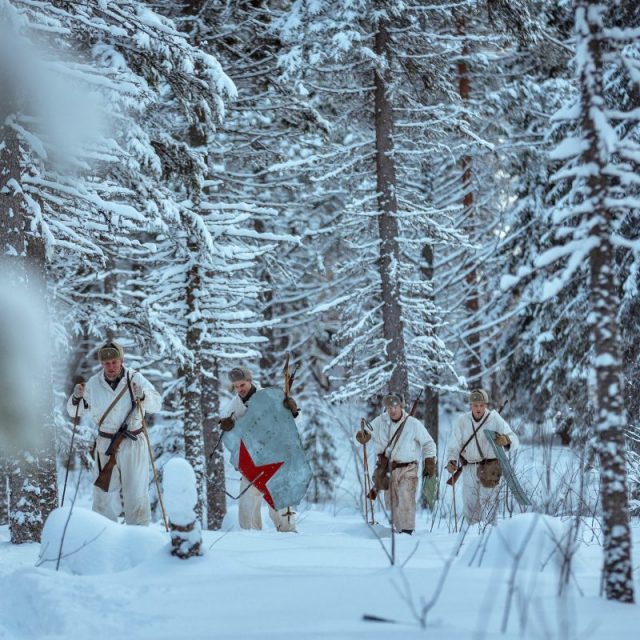
The making of rings, bracelets and other trench arts and crafts were a commonplace pastime during the long trench warfare period of 1942-1944. Material for these were sometimes collected from no man’s land in the form of plane parts from fallen fighter or bomber planes.
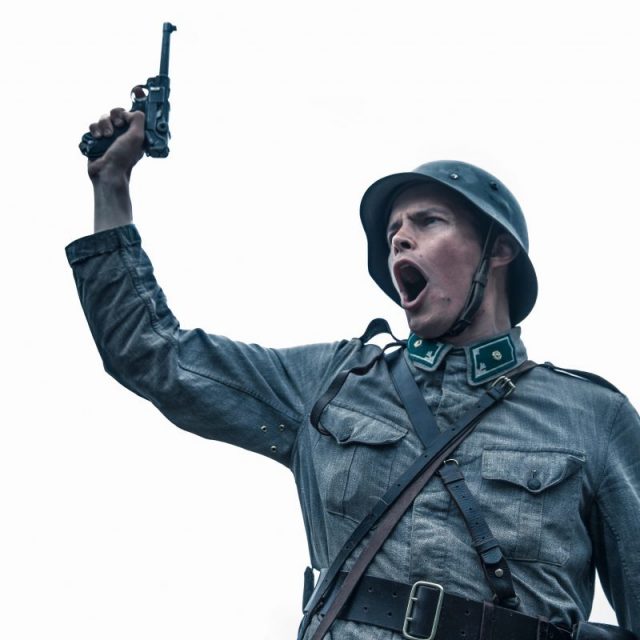
The war lifted one group of men to a pedestal for their heroism and sacrifices: the young 2nd lieutenants, both conscripts and reservists, who were trained to lead their units by example and from the front. This led to a disproportionate number of casualties among them as they were often the first ones to stand up and fall back down again.
Young Kariluoto has to face his fears and his mortality in his first attack across a swamp. In this iconic scene he takes his first steps towards that pedestal, which defines his character throughout the movie.
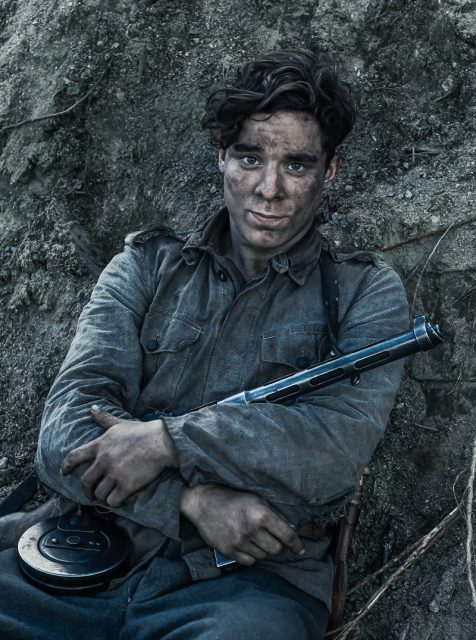
High casualty rates and the need to supply the Finnish Army with enough manpower resulted in the conscription of younger men and cutting their basic training time before they were sent to the front. After the 1944 armistice with Soviet Union, Finland had to demobilize its field army and the military was left with the young conscripts.
These conscripts then participated in the Lapland War, which has been later referred to as “The crusade of children.”
Available on Digital, DVD and Blu-Ray March 12
Captions written by Panu Korhonen & Petri Peltola, who served as war history experts for the production of Unknown Soldier.
